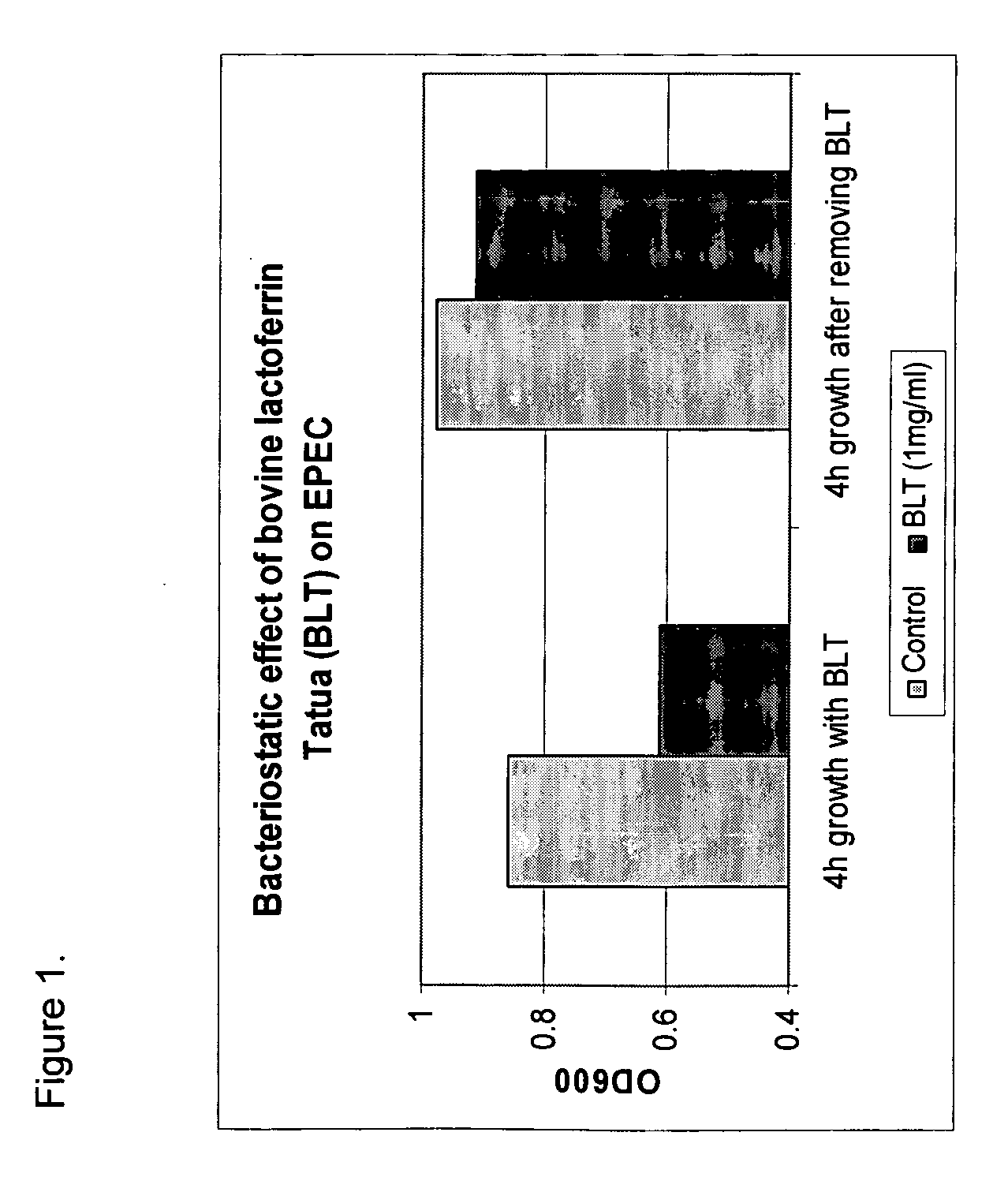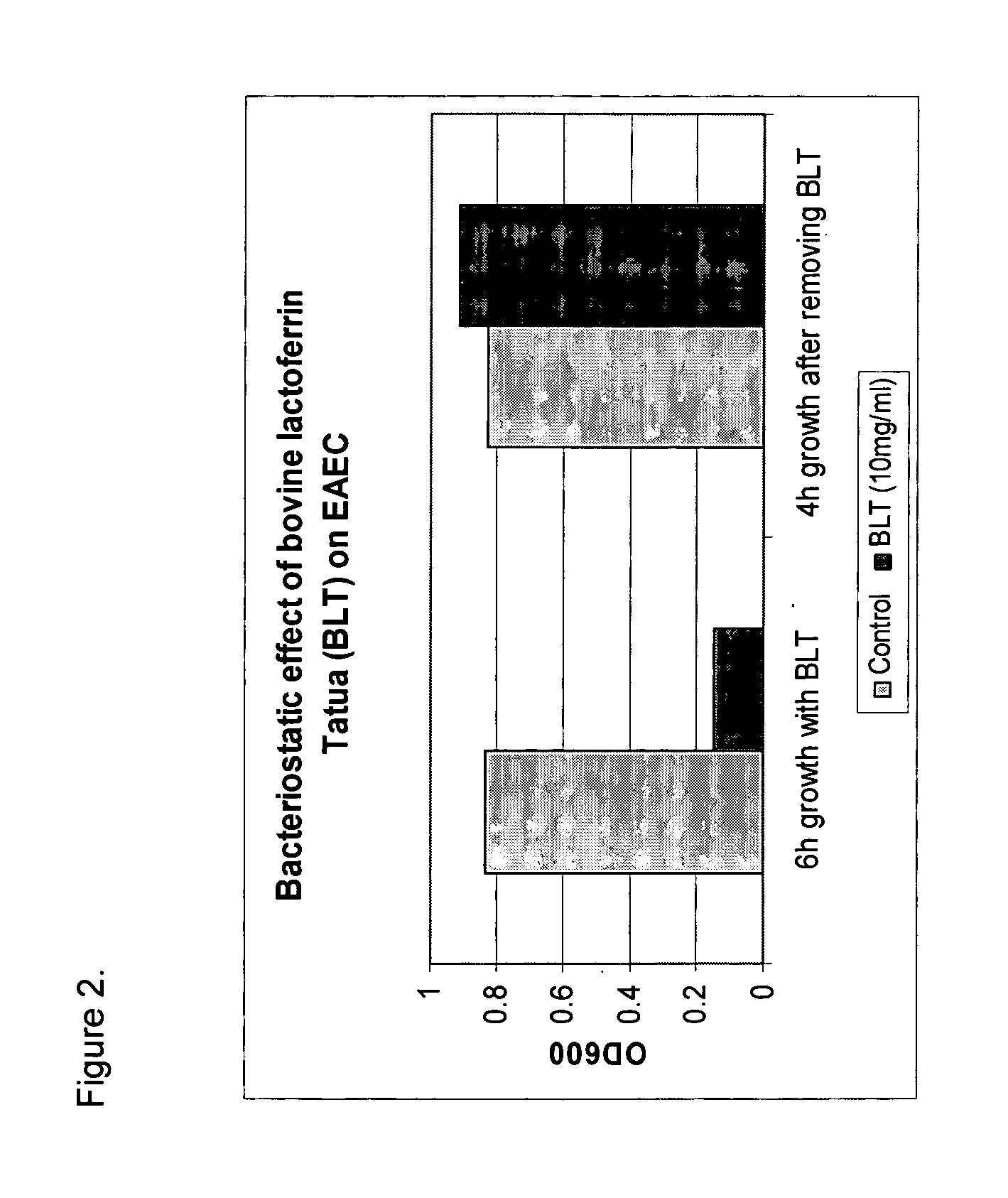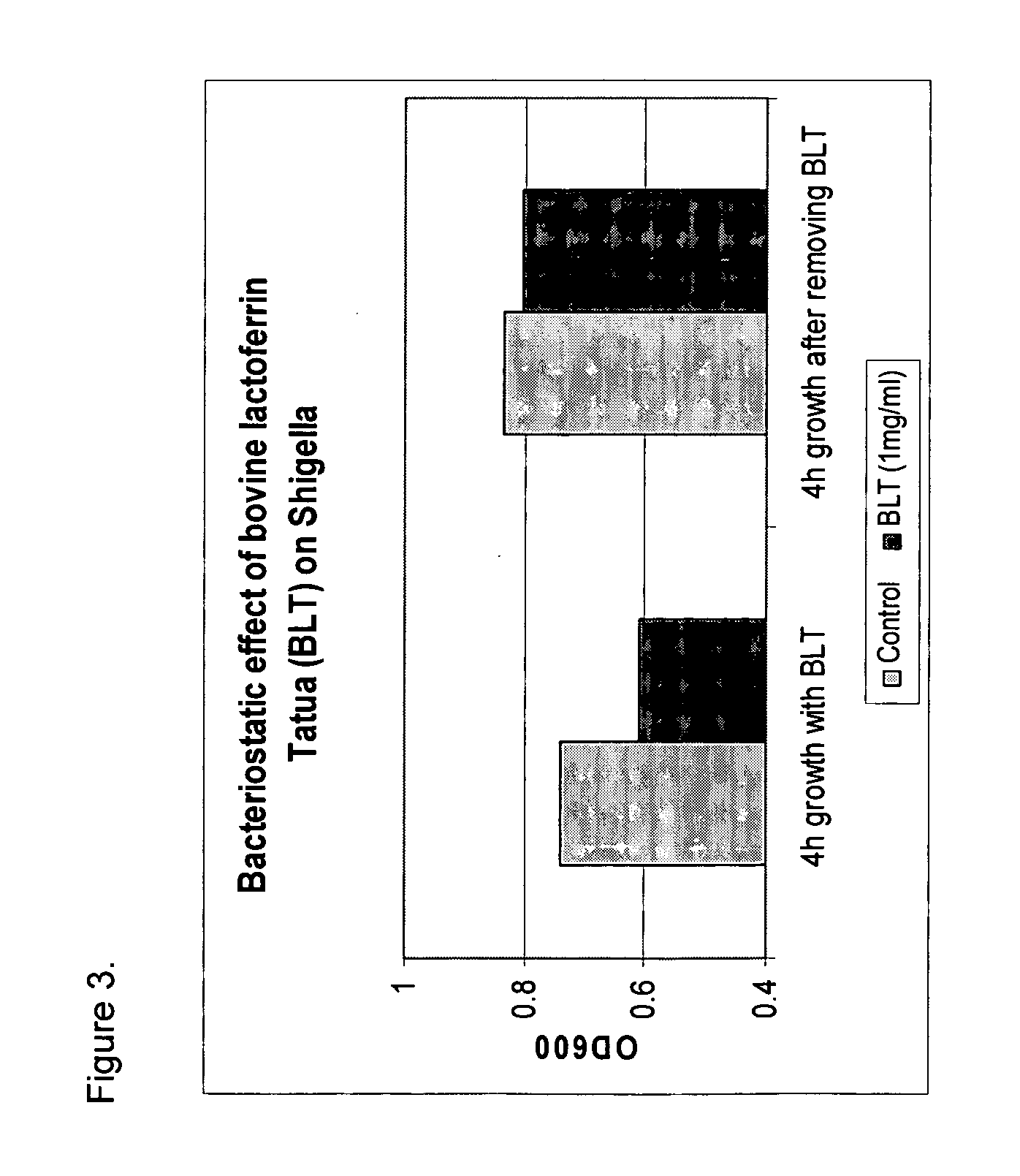Methods for inhibiting the growth of bacteria
a technology of growth inhibition and bacteria, applied in the direction of transferrin, peptide/protein ingredients, metabolic disorders, etc., can solve the problems of diarrheal illness severity variation, potentially fatal infection, peritonitis, etc., to inhibit the growth of bacteria and prevent the onset of illness.
- Summary
- Abstract
- Description
- Claims
- Application Information
AI Technical Summary
Benefits of technology
Problems solved by technology
Method used
Image
Examples
example 1
[0100] This example describes the materials and methods necessary to show the effect of bovine lactoferrin on bacterial pathogens having type III secretory systems. Three strains of bacteria were utilized in the present invention. The strains included STEC HW1, STEC 306-7 and STEC TWO 8023. Each of these strains is a different organism that utilizes a TTSS to infect cells. The bacterial strain C600, a pathogen that does not utilize a TTSS, was used as a negative control in the testing.
[0101] Bacteria from overnight growth in Luria Broth were inoculated at 1:50 dilution in Dulbecco's modified Eagle's medium (DMEM) with 25 mM HEPES, pH 7.4, and incubated at 37° C. in a 5% CO2 incubator without shaking. A 5 mL aliquot was measured into labeled tubes and bacterial growth was monitored spectrophotometrically at OD600 every hour for seven hours. Colony forming units (cfu) were evaluated during the logarithmic growth phase (4 hours) in all the control samples without bLF.
[0102] In order ...
example 2
[0106] This example illustrates the effect of bovine lactoferrin on the attachment of bacterial pathogens to eukaryotic cells. Specifically, this example illustrates the effect of bovine lactoferrin on the protein EspB in the type III secretory system.
[0107] The western blot shown in FIG. 17 illustrates the effect of bovine and human lactoferrin on STEC HW1 and STEC 306-7. Lane L1 represents the molecular weight markers. Lane L2 represents purified EspB to indicate the appropriate position of this protein in the Western blot. Lane L3 in each of the gel pictures represents the amount of EspB in the supernatant (released) after 2, 3, 4 or 5 hours of culture growth of strain HW1. Lane L4 represents EspB in the supernatant of a 2, 3, 4 or 5 hour culture of strain HW1 which has been growing in 1 mg / mL human recombinant lactoferrin. Lane L5 represents EspB in a supernatant of a 2, 3, 4 or 5 hour culture of strain HW1 which has been growing in 1 mg / mL bovine lactoferrin. Lane L6 represent...
example 3
[0111] It is critical to the validity of this experiment that the bLf used in this experiment is iron saturated, and therefore not acting bacteriostatically to inhibit growth of the bacterial strains. This would alter the amount of EspB in each lane, potentially confounding the interpretation of the data.
[0112] This example illustrates the equivalent rate of growth of the bacteria in the presence or absence of bovine lactoferrin when saturated with iron. Because the growth of each culture in this experiment is similar either in the presence or absence of bLf, the observed effects on EspB are due to a novel activity of bLf and not to either growth inhibition or iron sequestration.
PUM
| Property | Measurement | Unit |
|---|---|---|
| Mass | aaaaa | aaaaa |
| Mass | aaaaa | aaaaa |
| Mass | aaaaa | aaaaa |
Abstract
Description
Claims
Application Information
 Login to View More
Login to View More - R&D
- Intellectual Property
- Life Sciences
- Materials
- Tech Scout
- Unparalleled Data Quality
- Higher Quality Content
- 60% Fewer Hallucinations
Browse by: Latest US Patents, China's latest patents, Technical Efficacy Thesaurus, Application Domain, Technology Topic, Popular Technical Reports.
© 2025 PatSnap. All rights reserved.Legal|Privacy policy|Modern Slavery Act Transparency Statement|Sitemap|About US| Contact US: help@patsnap.com



